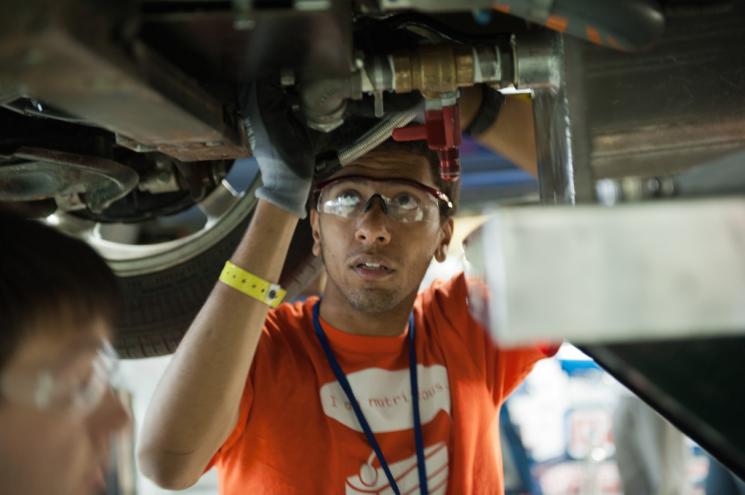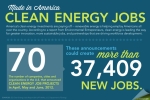
A North Carolina State University student works on an EcoCAR vehicle at the Year 3 finals last year in Milford, MI. | Energy Department photo.
As the auto industry introduces more alternative fuel and energy efficient vehicles to dealerships across the U.S., teams of university students are also making sure consumers have more choices on the showroom floor.
Through the EcoCAR2: Plugging Into the Future advanced vehicle competition, 15 university teams are learning how to design and build energy efficient vehicles that can save consumers money at the pump and reduce our dependence on foreign oil. With the first year finals of this three-year competition approaching, the teams are hard at work designing vehicles that reduce emissions and oil use while helping the U.S. auto industry continue manufacturing the best in energy efficient vehicle technologies.
Each EcoCAR 2 team works to substantially improve a Chevy Malibu’s fuel efficiency while maintaining its performance, safety and creature comforts. While working to balance consumer needs with efficiency, participants deal with similar challenges as professional automotive engineers. Over the 24 years of Energy Department sponsored vehicle competitions, many graduates have gone on to work in vehicle-related research and development.
Just like their professional counterparts, the students face a long and complex process when designing their vehicles. They spend their entire first year creating models and simulations of the vehicle on the same specialty software that manufacturers use. Designing the full vehicle on a computer before dealing with physical components saves the teams time and money, allowing them to try out a number of ideas and test them virtually with minimal investment. Once they’ve proved their vehicle model meets all of the EcoCAR 2 requirements, they earn their physical vehicle to rebuild and refine over the course of their second and third years.
As a team moves through the design process, one of the most important decisions made is vehicle architecture -- which refers to how energy flows through a vehicle. All EcoCar2 vehicles will be Plug-in Hybrid Electric Vehicles, which store power from the electric grid in a battery to drive the vehicle. Each team has found a different way to make this technology their own.
- Four teams chose a “Parallel through the Road Plug-in Hybrid” architecture, where the electric motor powers two wheels, while a biofuel-powered motor powers the other two wheels.
- Four teams chose a “Series Plug-in Hybrid” architecture, where all four wheels are connected to the electric motor. When the charge runs down, a back-up biofuel-powered engine charges the battery.
- Five teams chose a “Series-Parallel Plug-in Hybrid” architecture, which combines the best of both worlds featuring the ability to switch between relying on the battery, the biofuel-powered engine, or both to drive the wheels.
- One team chose a “Hydrogen Fuel Cell Series Plug-in Hybrid” architecture, which uses both a battery and a fuel cell to drive the wheels. The fuel cell converts hydrogen into electricity to either propel the vehicle or recharge the battery pack.
- One team chose a “Split-Parallel Plug-in Hybrid” architecture, which uses a battery pack to start the engine, provide additional acceleration, and run the accessories, while a separate motor also provides power to the wheels.
The Energy Department is proud to team up with industry leaders like General Motors to develop future innovators who can serve at the forefront of energy efficiency. Next week, the teams will be in Los Angeles to reveal their final Year 1 designs…and though only one team can walk away in first place – they all represent the next generation of workers the U.S. needs to lead the global auto industry.




